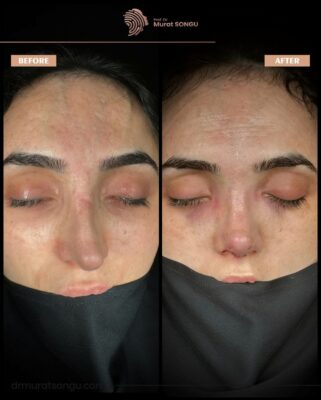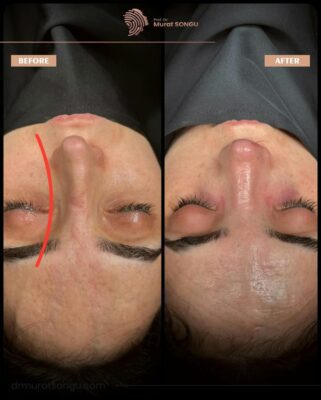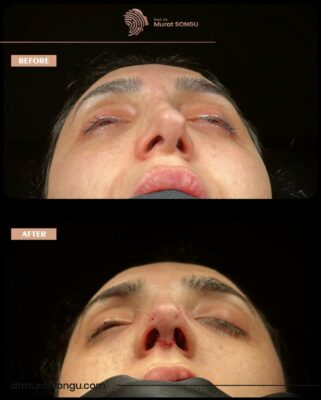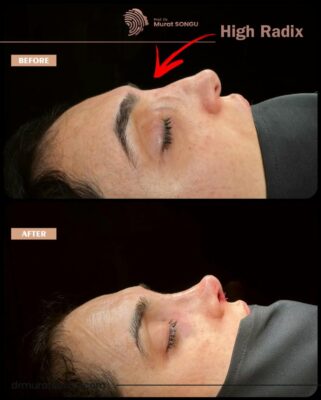In this case, a high radix problem that occurred after a previous nose surgery was addressed. The patient’s nasal root was significantly higher than normal, creating an unbalanced facial profile. This not only resulted in an aesthetically unpleasing appearance but also obscured the natural contours of the nose.
Through revision rhinoplasty, the nasal root was reshaped to achieve a more natural transition. After surgery, the angle between the nasal bridge and the forehead was softened, and the patient’s facial profile became more harmonious. This intervention not only restored a natural look but also eliminated the artificial appearance caused by the previous surgery.
In such cases, the most crucial point is to carefully assess the tissue differences remaining from the previous procedure and correct them using appropriate techniques. As a result, a natural, aesthetically pleasing nose that harmonizes with the patient’s facial features was achieved.




